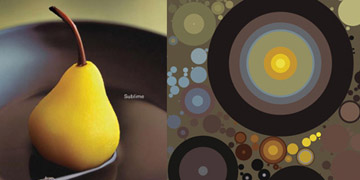Numbers, Words, Colors:
Data Visualization and the Humanities
Influence of the humanities on data visualization
Tools developed by Martin Wattenberg and his associate Fernanda Viégas, have changed the way people look at and use visualizations, by empowering and equipping users with the methodology needed to ask different questions of visual data, and to find hidden patterns.
Fernanda Viégas and Martin Wattenberg are world-recognized leaders in data visualization. Their pioneering work has reinvented visualization as a mass medium. In this lecture hosted by the MIT-SHASS HyperStudio, Wattenberg, (whose background is in math and computer science) asks how the humanities have influenced the evolution of data visualization, then answers with examples from his own work.
This presentation is from the MIT-SHASS HyperStudio Humanities + Digital Conference on Visual Interpretations.

"[S]mall words are indicators of style, of how we're framing issues –
they're very important. This was a complete revelation to me as a
computer scientist. Realizing that these simple, small words
hold so much meaning was fascinating…”
— Martin Wattenberg
image: detail from the series "Luscious," by Wattenberg and Viéga
Exploring
Wattenberg admits that his "hard drive is loaded with failed visualizations," but emphasizes that the visualization process should be one of trial and error. As for encouraging the development of visual literacy, Wattenberg concludes, "as visualization becomes part of the discourse and people realize, 'this is something that's powerful, it can help me make my case in life,' they'll learn… I'm hoping for education and good, old-fashioned human brain power."
About Viégas and Wattenberg
Before founding Flowing Media in 2010, Viégas and Wattenberg led IBM's Visual Communication Lab. Their system "Many Eyes" was the first to put powerful visualization tools in the hands of a general audience. Their vision of democratizing visualization has empowered journalists, businesspeople, and scientists to tell stories with data.
Prior to joining IBM, Viégas was known for her foundational work in visualizing social activity and conversations. Her Themail and Chat Circles systems broke new ground in graphical communication. Wattenberg created web-based visualization tools that demonstrated the popular potential of the medium. His visualizations of the stock market (SmartMoney's "Map of the Market") and of baby names (Baby Name Wizard's NameVoyager) are considered internet classics.
Viégas and Wattenberg are also known for their visualization-based artwork, which has been exhibited in venues such as the Museum of Modern Art in New York, London Institute of Contemporary Arts and the Whitney Museum of American Art.